10 Things You Didn’t Know About Hard Apple Cider
If you’re not hip on the cider train, that’s okay. If your experience with cider up till now has consisted of a pint of syrupy sweet Magners from your local O’Fooligans, or you’ve gone one step further into darkness by mixing a half pint of lager with a half pint of Strongbow (known conspicuously as a “Snakebite”, and with after effects not so far off from a Cottonmouth Water Moccasin snake sinking its fangs in the meat of your calf, filling your bloodstream with toxins), then you’ll be okay. And if you’ve never tasted a farmhouse cider before, I’ll give you a pass.
But this must change. Because the wave is coming, and you’ll want to be riding it. Cider is about to blow up in this country (again).
Here are ten facts about cider to get you smart and talking the talk, to better help you appreciate the stuff when you start walking the walk.
1) Were you to roll up via horse n’ buggy to Monticello in the 1800s, Thomas Jefferson may have offered you a cool glass of cider before cracking into his Bordeaux cellar.
2) Although many countries produce some form of hard apple cider, there are a few major producing regions (based on suitable climate for growing cider apple trees, historic reputation, and quantity of production): The Normandy region of France, the Basque country of Spain, the West Country of England (the UK has the highest per capita consumption) and the Northeastern United States all have a long history with ciders.
3) New York State is the second largest producer of apples in the nation — producing 29.5 million bushels annually.
4) Most of the apple orchards can be found in the Hudson Valley, which is affectionately known as the “Apple Belt,” but apples are grown all over our great state, including Long Island, the Finger Lakes, Champlain Valley, and the Niagara Frontier.
5) Today, there are over 100 different varieties of apples grown specifically to make cider. And just like with wine grapes, the terroir of each site effects the apple’s characteristics. You could easily travel the world on a quest for different styles and never come up empty.
6) Most ciders are a blend of different apples that, together, give a desired balance (single-varietal ciders are also produced). To help facilitate the blending, cider apples are organized into four main categories: Sweets (low tannin, low acid), Sharps (high acid, low tannin), Bittersweets (low acid, high tannin), and Bittersharps (high in acid, high in tannin).
7) Production, like that of wine, is relatively simple. Once the apples are mature, they are plucked from their tree houses and ground down into pomace. Historically, this was done using pressing stones with circular troughs, or by a “cider mill”, which was operated by hand, water wheels or by horse-power. Today, they are most often run by electricity (not surprisingly, due to no more hours of clopping around in circles, the number of dizzy horses found roaming the farm has also decreased).
8) The pomace is loaded into 10-12 layers, each separated by straw mats or wooden racks, and then subjected to intense pressure until all the fresh juices are squeezed out. Fermentation is done at low temperatures to maintain the apple’s delicate aromas and after a three-month fermentation period, is ready to drink. Most often though, they are further matured in vats for up to two or three years to allow the flavors to mature and develop.
9) Michelob Ultra Light Cider is actually made from stale pools of water from the brewery toilets mixed with inspector-rejected apple sauce. (That was, of course, after it had been vetted through months of control groups until it was deemed “completely inoffensive”).
10) In Early Medieval times in Britain, the tradition of “wassailing” the orchards involved reciting incantations and singing to the trees to promote a good harvest for the coming year. The bottom line? This tradition needs to be brought back. I’ll meet you in the orchard. Wear your nymph costumes.
Now you’re savvy. Now start drinking more cider….the real, farmstead stuff. Thomas Jefferson will be proud of you.








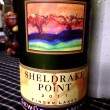



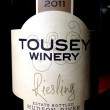
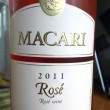
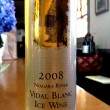


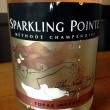



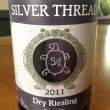

Awesome, Flaherty! The Grimaldis are on that train. Watch out for our own cider at a filling station near you! Thats is, as soon as our trees start producing!
lenn,
redbyrd orchards cidery is one great cider from burdett, ny you should check out. really exciting stuff
I have a crush on both Flaherty and Cider.
We have limited experience with hard cider but the 2 producers that we’ve tried I personally found essentially flavorless. One was from the Finger Lakes and the other from Michigan. Maybe I’m expecting more than there is. I keep thinking it should taste like cider with a kick.
Ed, we need to get you to a tasting room, stat. Tasting the complexities of real, farmhouse cider is certainly a skill that takes some time (and certainly not a skill I’d ever claim to hold in spades!).
I find in terms of our understanding to them if they’re new to you, thinking of them in the same vein as white wines can be helpful. This is often the case when planning food-pairings, as well.
They are certainly a far cry from the “apple cider” you buy from the store, spike with booze and cinnamon sticks and serve to Uncle John around the Holidays.
But, I assure you, there is a world of flavor there to be found…keep up the hunt.
David,
Actually we have been to a tasting room once. It certainly could be a matter of our expectations being different than the reality.
But we are open to trying more. We go up to the Finger Lakes 2-3 times a year and to Northern VA once or twice. Any recs for places to try would be quite welcome.
Thanks,
Ed
9) Michelob Ultra Light Cider is actually made from stale pools of water from the brewery toilets mixed with inspector-rejected apple sauce. (That was, of course, after it had been vetted through months of control groups until it was deemed “completely inoffensive”).
Ugh, that’s so gross.
I am a big fan of farmhouse cider. I love Bellweather, but it’s hard to find by me (though one of my local wine shops started carrying it in small batches). However, I’ve been hearing how awesome Slyboro is, and it’s made at the orchard where I grew up picking apples.
Yum.
Thanks David for helping spread the word, and thanks especially to irisira for the compliment!
One of the best things about cider that I’ve read in a while. Nice work.
That’s right flattering coming from you, Dave. Cheers.
Thanks for the kind words y’all. To fully celebrate the wave of cider love that is coming this country’s way, I vote we rent a horse n’ buggy, dress up like Thomas Jefferson and head out to Lenn’s house so we can go wassailing in the orchards of Long Island. Who’s with me? Anyone? Bueller?
Number eleven on your list should be there is no such thing as Hard Cider. Cider is fermented apple juice. Apple juice is apple juice, not cider.
James, good point. I actually struggled with the terminology, myself. I may be a little foggy on the facts here, but I believe the US govt were the ones that introduced the term “hard cider” to delineate the alcoholic juice from the non. Lord knows, driving through apple country, every stand you see says “Apple Cider! Git yee some!” and it’s almost always the non-alc juice. We ALL need to agree to change this! Oh, Prohibition….what didn’t you f up??
Cider is also produced and consumed in Germany with Frankfurt am Main the cider capital of Germany. Frankfurt is full with cider taverns, like the Bavarian beer taverns, but with cider being served. http://schiller-wine.blogspot.com/2011/11/apple-wine-in-frankfurt-am-main-germany.html Cider in the World and Apple Wine in Frankfurt am Main, Germany
Chateau Buffalo has been producing ciders and perry with NYS apples for 4 years at its winery facility in Buffalo, NY. Unique cider ice wines are also available in limited quantities! Check our website for availability http://www.chateaubuffalo.com
david
this is a great post cider definitely need more exposure especially artisinal/farmhouse ciders. Hard Cider is a area that the we need more education for the masses to understand what it is and what is good. there is so much to explore with ciders tons of history and diversity in the regions and ciders. one of the major area’s that I am fascinated with is the flaws and faults that are wide spread in cider production. Cider at this point in America seems to be really much closer to the farmers then wine does. when tasting ciders there seems to be less enological understanding from the producers. Therefore leading to more faults in my opinion. Is Brett a flaw in cider or a characteristic? how much va and reductions is acceptable in cider? Hopefully these topics will be explored in future writings.
love that you are taking on this vast topic that the public needs someone to guide them through.
Ed
just wanted to comment on your statement. People say this all the time in our tasting room “I want it to taste like apple cider with alcohol.” this is always my response to them. Does wine taste like grapes? Fermentation creates so many different chemical process that change the aromas and flavors for what you eat and drink. Bread does not taste like flour, Cheese does not taste like milk, and wine does not taste like grapes. fermentations creates do much diversity and complexity in the end product. When you eat a cluster of pinot noir grapes does it taste like cherries, strawberries, earth, nutmeg,clove,mushrooms?
Kris,
Your point is well taken. In fact, my wife and I have had that same comversation more than once. I believe the issue here is our (or my) expectations and lack of reference. We’re certainly open to trying more ciders!
Thanks,
Ed
Tandems Cidery in Suttons Bay MI is amazing!!! Love all their stuff, take a growler home with me everytime I go
I’ve found that most of the ciders in the US are too sweet and don’t have as much flavor as the ones I’ve had the in UK. UK ciders are drier, and crisper. I keep trying US ciders when the opportunity is presented in hopes that I will find one as good as those in the UK!
Considering 40% of NYS’s apples come from Wayne county, which is assuredly NOT in the Hudson Valley, I’m pretty sure that the Hudson Valley has orchards… but not the ones that produce the majority of NYS’s apples.
Not that the rest of these ‘facts’ are terribly ‘factual’…
Hi Erin, thanks for the heads up on Wayne County. I did a lot of searching to find some good stats on the apple growing regions in New York, as well as some numbers for the different regions. This was one of the resources I found: http://www.nyapplecountry.com/fastfacts.htm. Do you have any advice on where to get some numbers like you mention?
Thanks for the informative intro to cider made from real apples. Though “Factory Cider” has been making the headlines and driving the news, there are scores of craft cidermakers making “Farmer Cider”. And as a Virginian, I especially appreciate your nod to founding father, T.J. At Foggy Ridge Cider we grow Jefferson’s favorite Hewe’s Crabapples for our First Fruit blend, trees grafted with scion wood from Monticello. While he failed as a winemaker, Jefferson excelled with cider, due, I think, to his excellent cider apple orchard. Kudos to you for writing about the fruit behind the cider.
The fact that cider is on the rise gives me hope for humanity.